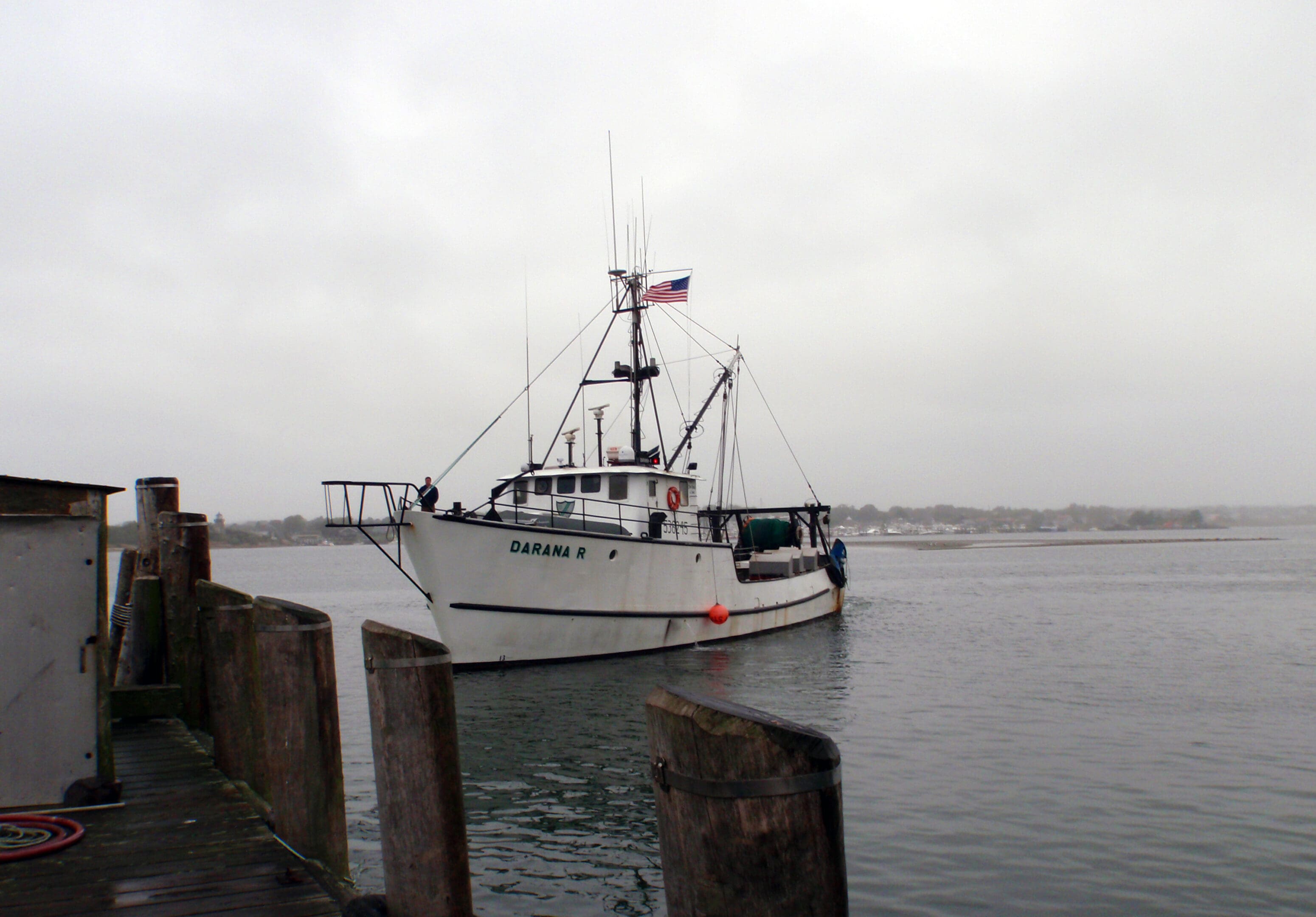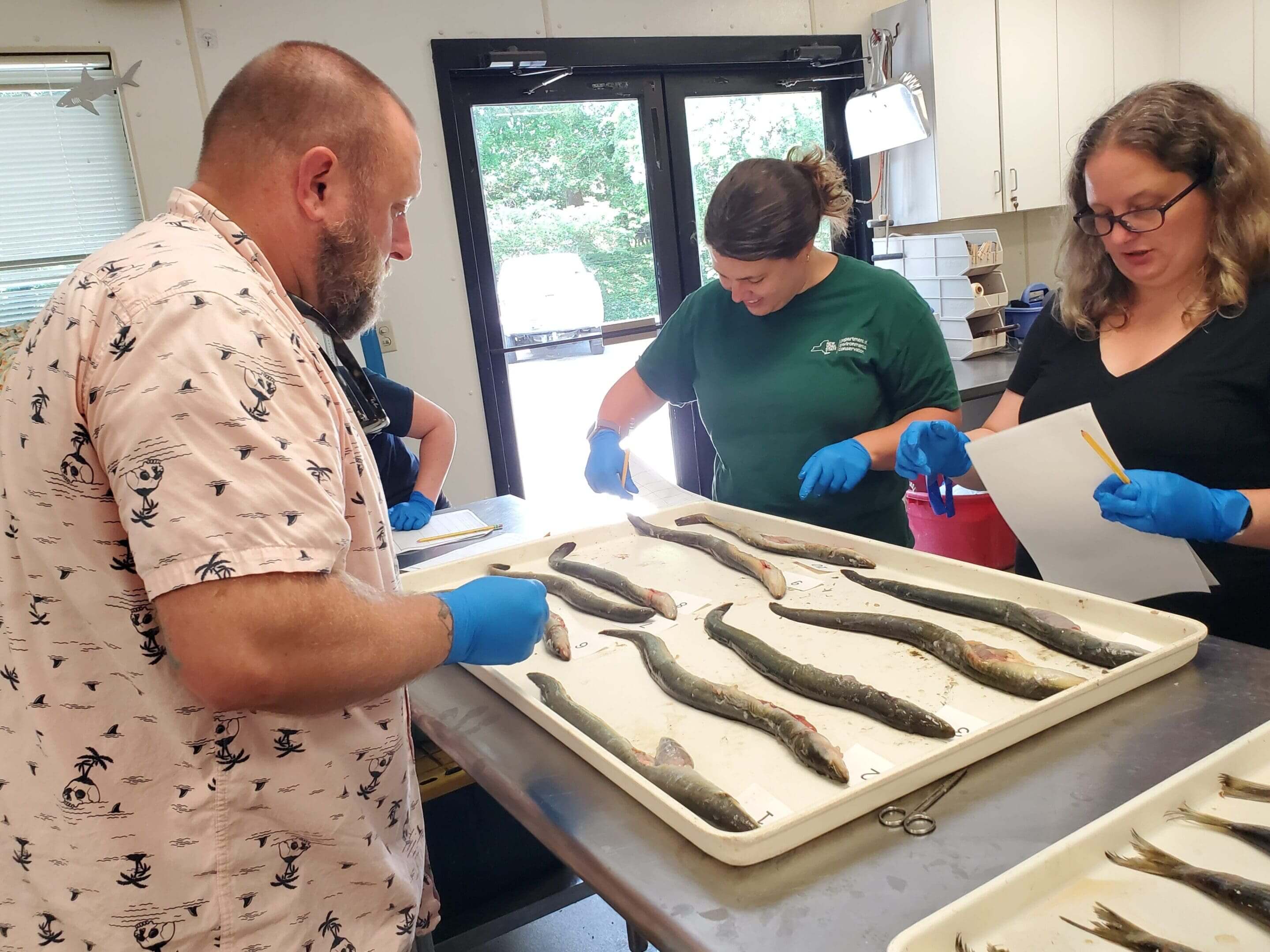
Vessel and Gear Workshops
The equipment and vessels needed for coastal surveys require constant upkeep to provide accurate data. Constant maintenance and calibration when changing vessels and gear are to avoid impacting the time series or providing inaccurate data to scientists and managers.
From January 16-18, 2024, the NEAMAP Survey Technical Committee (STC) in partnership with the Atlantic States Marine Fisheries Commission (ASMFC) ran an online vessel and gear calibration workshop to bring together survey leads from NEAMAP and SEAMAP to discuss common issues agencies encounter when changing a vessel or gear for their bottom trawl surveys. The workshop was split into three categories: Vessel changes and outages, gear changes, and statistical methods in calibrations. A summary of these workshop findings and resources can be found here. This workshop also resulted in a creation of the Guide to Vessel and Gear Change and Calibrations.
From November 12-14, 2024, the VIMS Multispecies Research Group, NEAMAP STC, and ASMFC ran another in-person gear workshop to review common practices and gear used in trawl and longline surveys. A summary of these workshop findings can be found here.

Maturity Workshop
Aging and maturity data can be useful to fisheries management. Determining the maturity of the sample fish caught through state survey programs is a critical step in effectively managing individual stocks. By having sex and maturity data, researchers can better determine variability in spawning location, timing of season spawns and changes with size at maturity, and estimates of spawning stock biomass. After the samples have been processed and the data analyzed, this information can be used to inform models that can both look at the past peaks and drops in species abundance and help estimate future trends based on factors like the ratio of males to females and the number of juveniles versus sexually mature and spawning fish.
Size and age at maturity can vary based on environment and fishing pressure, so long-term monitoring of fish maturity is necessary to properly assess changes in stock biomass over time. Several state programs including Rhode Island, New Jersey, Maryland, Virginia, North Carolina, and South Carolina collect or have previously collected maturity data for the fish caught in their survey programs, and almost all states collect at least sex data for their economically important species to help better inform the fishery.
To discuss how to best determine sex and maturity for priority species, the NEAMAP Survey Technical Committee in partnership with the VIMS Multi-species Research Group (MRG) held a 2-day workshop in July of 2024. During the workshop, state scientists from across the coast gathered to study samples collected by the NEAMAP Southern New England and Mid-Atlantic Nearshore Trawl Survey and prepared by the MRG. They examined various stages of sexual maturity of species including Atlantic mackerel, Atlantic menhaden, American eels, and striped bass, and learned new methods for how to implement this type of data collection into their own surveys or discussed how the VIMS method differs from their own protocols.
A summary of workshop findings can be found here.

